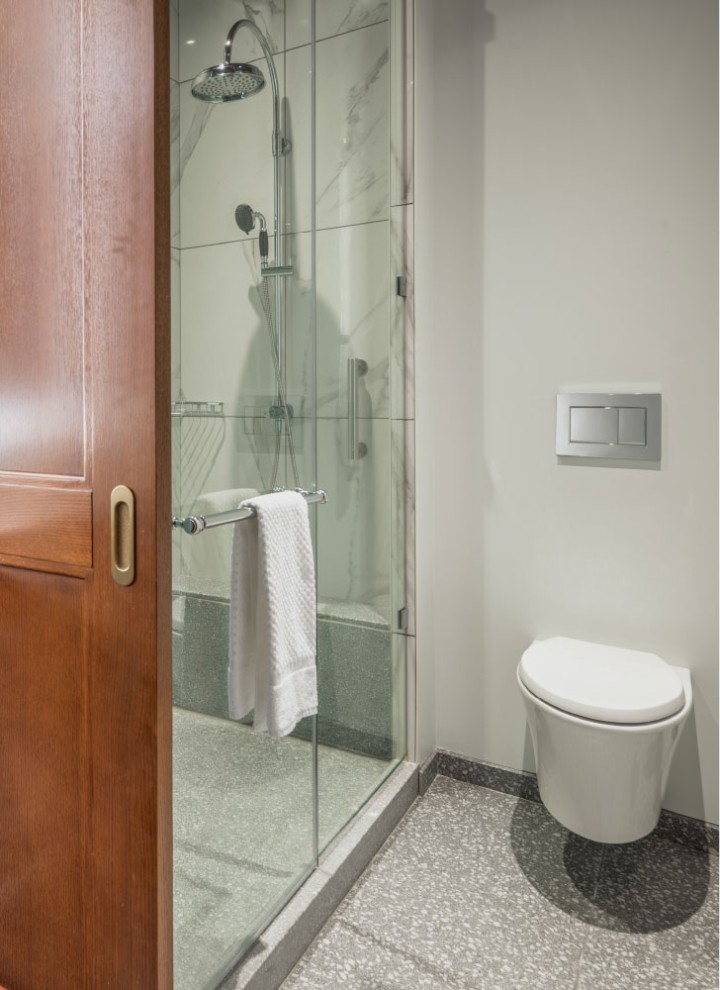A Game of Inches
Geberit Solves Structural Challenges in Landmark Chicago Hotel Renovation Canopy by Hilton / HGI Central Loop - Chicago, Illinois
Project Background & Goal
In Chicago’s financial district, just across from the Willis Tower, a 117-year-old landmark building—once the headquarters of the Chicago and North Western Railway—was reimagined as a dual-branded hotel complex: Canopy by Hilton Chicago Central Loop and Hilton Garden Inn Central Loop. The renovation would transform the building into 350 guest rooms and suites while preserving its historic architecture. The development team, including Phoenix Development Partners and Hartshorne Plunkard Architecture, aimed to balance modern hospitality standards with the requirements of a designated landmark.

Challenges
As with many historic renovations, the project team encountered structural limitations that impacted design decisions. The original plan called for floor-mounted toilets in all HGI Central Loop guestrooms. However, BIM modeling revealed that the necessary floor penetrations for plumbing—stack and vent lines—would exceed the structural tolerances of the steel-and-clay tile construction on the lower levels. Additionally, floor-mounted toilets would have compromised valuable bathroom space, already constrained by ductwork and tight entry points. The solution needed to meet hotel brand requirements, maintain design flexibility, and respect landmark preservation standards.
Key Solution
The team pivoted from the initial design, and expanded use of Geberit in-wall systems, which had already been specified for Canopy by Hilton’s upper floors, across the entire building. The wall-hung system concealed tanks and plumbing inside the walls, preserving design flexibility and solving tolerance issues on lower floors.
“Because of the limited space and structural limitations, regular floor-standing toilets would not have allowed opportunities for design flexibility,” said Stephen Embree, Central Region and National Builder Sales Manager at Geberit.
The Geberit system also reduced flush noise—an important consideration in upscale hotels—thanks to its sound-insulated tank. The wall-hung design reclaimed critical inches in tight layouts, allowed fixture heights to be adjusted between 15” and 19”, and met ADA compliance. The DuoFix II frame supports up to 800 lbs and installs easily with standard wall framing. Together, these advantages made the Geberit system the ideal choice for a complex, structurally sensitive renovation.

Results & Impact
The Geberit in-wall system played a vital role in modernizing a historic space without compromising structural integrity or design intent. It enabled the team to move toilets by just five or six inches where needed—small adjustments that had a major impact on spatial flow and guest comfort. By eliminating bulky floor-mounted toilets, the design team preserved valuable square footage, enhanced layout flexibility, and delivered modern amenities that aligned with Hilton brand standards.
“Every inch counts, especially in tight spaces with little or no wiggle room,” Embree noted.
Thanks to Geberit, the development team was able to transform a national landmark into a modern, boutique hospitality experience—one that honors Chicago’s history while meeting the expectations of today’s traveler.